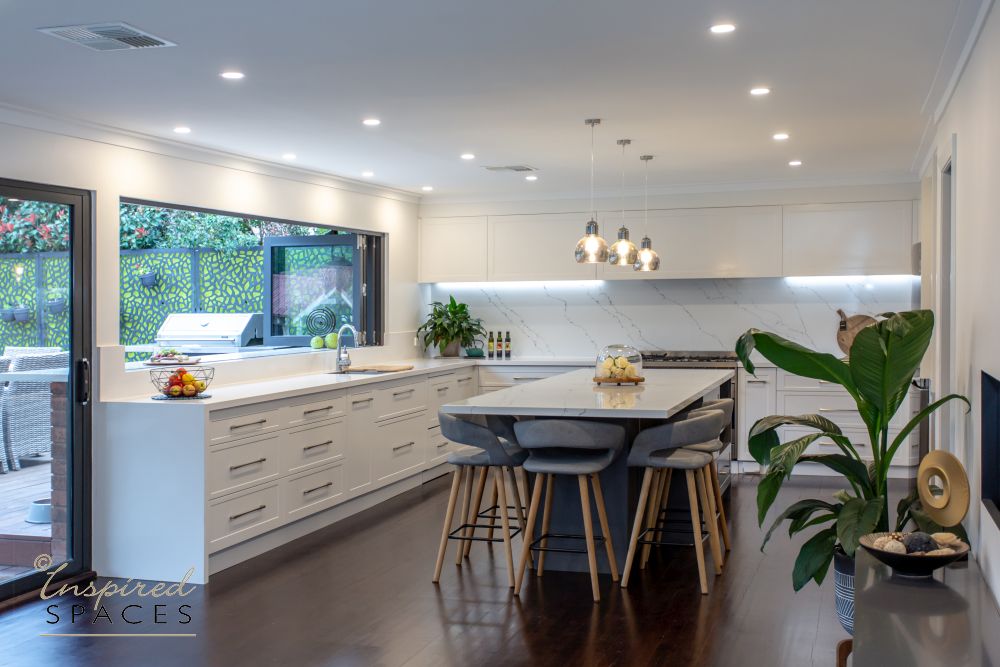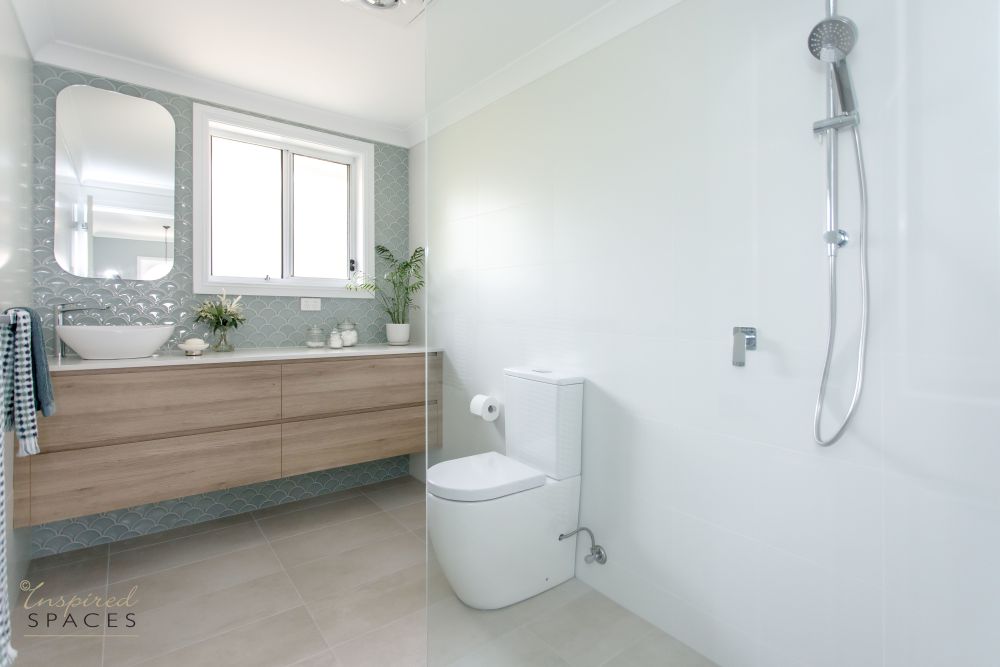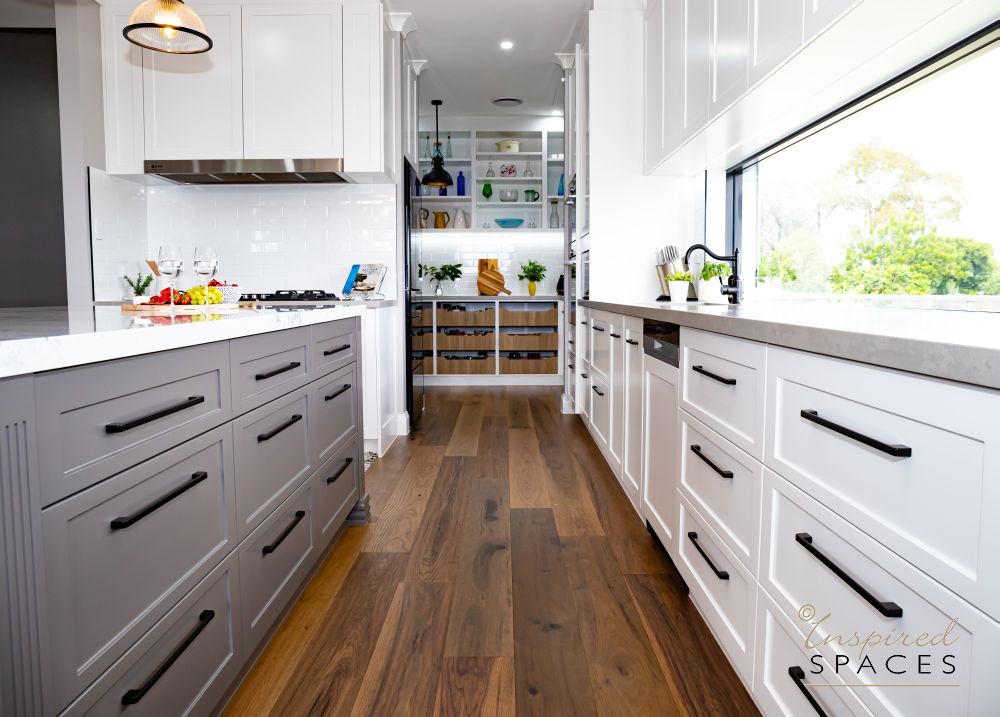Bathroom and kitchen colour selections have no hard and fast rules. However, there are a few generalisations.
Colour makes all the difference in a room, but it can be difficult to know where to start. Making the right choice for your home can be intimidating, especially if those colour choices are attached to expensive price tags such as tiles and cabinetry.
Your choice of colour palette can completely change the perception of a space. Making a room feel larger or smaller, brighter or darker and warmer or cooler.
We’ve gathered a few important tips together to help you choose the best bathroom and kitchen colours to create spaces you’ll love.

Where To Start In Selecting Your Bathroom & Kitchen Colours
A good way to begin is to select the least flexible element in your bathroom or kitchen first. From there you can coordinate other elements to match. Adjusting paint colours is much easier than changing benchtops or tiles.
In the kitchen, it’s a good idea to choose the bench top first and the match the splashback and cabinetry. However, in the bathroom, select the tiles first. The area the tiles cover is much larger than any other element in the bathroom, so you don’t want to have to change them.
For renovations, chose colours that harmonise with any existing elements that you’re keeping in your bathroom or kitchen. This will ensure a cohesive look.
The Rule Of Three
The rule of three can be used as guidance for creating a beautiful scheme for your bathroom or kitchen.
It’s important to think about proportion in order to be successful with this rule. 70% of the scheme should be the lightest colour, 20% for the second lightest colour and the darkest colour just 10%.
FREE DOWNLOAD!
Get our Kitchen Design Guidelines to help you with your planning and renovation.

Use The Colour Wheel
You can’t go wrong by following colour theory. Find yourself a colour wheel and use it as inspiration for quick and easy solutions. For example, opposite colours on the colour wheel are ‘complementary’ and will create a strong contrast. Whereas colours that are near each other create an ‘analogous’ scheme and will give a softer, more relaxed vibe.
There are a variety of schemes that all work well, but which way you go will be determined by the overall look you’re wanting to achieve.
Soothing and calming colours work best for bathrooms, while kitchens can benefit from both practicality and a little personality.
Keep in mind that for smaller spaces, lighter colours can make them appear more spacious. While darker colours can add a sense of cosiness to larger areas.

Don’t Underestimate Lighting
Colours will change in different lighting. Look at your colour choices in the natural daylight as well as artificial lighting and at night. It’s also a good idea to be in-situ while selecting a colour as lighting will differ from room to room.
So, using samples to test your colour/s in your space before committing, is a great idea. As well as lighting, surroundings can also impact the appearance of a colour. Testing allows you to see how your chosen colour/s will interact with the specific conditions in your bathroom or kitchen.
Find Inspiration From The Rest Of Your Home
Consider selecting an accent colour from a living space and using it as a dominant colour in your bathroom or kitchen. This will create a cohesive flow of colour without each room looking the same.
Understanding Undertones
Don’t be afraid of choosing brighter, more saturated colours for your kitchen and bathroom.
Alternatively, it doesn’t have to mean loud or bright. Inject some colour by selecting more muted tones. Any colour which holds a degree of grey, such as deep blues and greens work well with neutrals but will add a spark of colour.
Whether you opt for calming neutrals, moody jewel tones or earthy shades, the key is to create an space that aligns with your ideas and style, but also enhances the functionality of these key areas of your home.
Understanding how paint and wood undertones work will help you select colours that work well together. All colours have an undertone that can throw a tinge of yellow, green or pink for example.
Some woods are warmer in colour than others and having them stained will accentuate its undertone.

Add Interest In Unexpected Areas
Add pops of colour to unexpected areas of your kitchen such as baseboards of islands, backs of cupboards or the insides of drawers. A bit of fun without being too overwhelming.
Metallic or black plumbing and cabinetry hardware are popular at the moment. They add interest without being too over the top.
Ultimately, choose colours that resonate with you and reflect yours and your family’s personal style. You’ll all be spending plenty of time in these spaces, so its essential that you feel comfortable and happy with your selections.
If all else fails, you can never go wrong with a simple crisp white kitchen or bathroom to look clean and uncluttered.
By keeping up-to-date with current trends, considering your personal preferences and following our suggestions in this blog, you can achieve a stunning, harmonious and functional bathroom and/or kitchen.

Book a 15-Minute FREE Discovery Call
Need help or advice regarding any residential or commercial design or decorating projects? Get your FREE 15-minute discussion with Robyn!





Leave A Comment Or Ask A Question